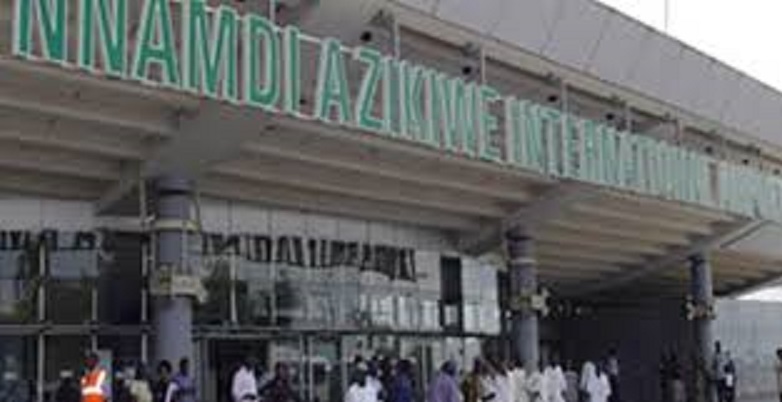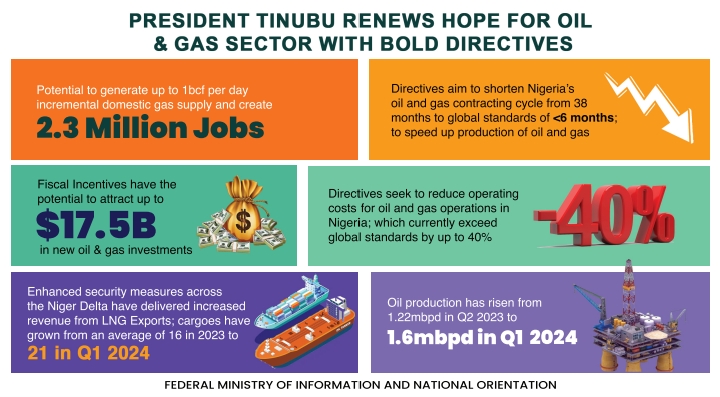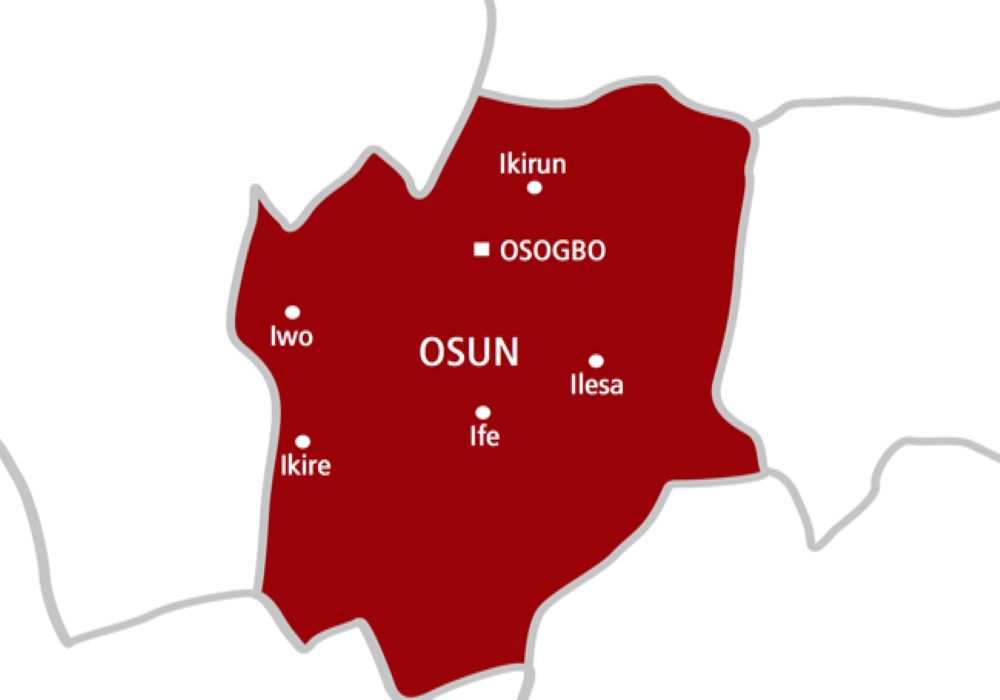Aviation
Miss Malaysia plane: Investigators shift Search zone

DUBAI – For the third time in less than three months, investigators looking for Malaysia Airlines Flight 370 are poised for a shift in search areas after revising some of their basic assumptions, according to people familiar with the process.
Malaysian officials said Monday they will go to Australia to map out the next phase of the search as costs for the missing jet mount.
Australian authorities previously have said a maximum of 60 million Australian dollars (US$55.5 million) will be set aside for the search. Malaysia has spent 27.6 million ringgit ($8.64 million) on fuel, food and other search-related items.
“That’s not final,” Defense Minister Hishammuddin Hussein said earlier Monday, cautioning that the cost may continue to rise until the plane is found.
Malaysia Deputy Defense Minister Abdul Rahim Bakri said the cost will be equally split between the governments of Australia and Malaysia. China hasn’t announced whether it will contribute, Mr. Rahim said. Two-thirds of the 239 passengers aboard Flight 370 were from China.
The latest rethinking on the search area, people familiar with the matter said, reflects inescapable uncertainties about the speed, flight path and altitude of the Boeing 777, which mysteriously veered off its flight plan on March 8, flew on for hours and is believed to have run out of fuel before going down in the remote southern Indian Ocean carrying 239 people.
But until the aircraft is found, such assumptions are still educated guesses. Changing the assumed speed, trajectory and altitude, though, can result in sharply divergent underwater search areas, possibly taking teams significantly south or southwest from where they focused their efforts in May.
Another major shift in the search risks stoking public frustration and skepticism about the endeavor, which has been criticized as slow and ineffective.Some experts who aren’t directly involved in the search said the shift would likely amount to hundreds of miles and create substantial logistics headaches, especially if searchers move farther away from the Australian coast.
No final decisions have been made about where the retooled search will focus and the effort remains “a work in progress,” according to one person familiar with the details. Public disclosure of the new area could come as early as mid-June, this person said, though underwater scanning equipment isn’t slated to begin operating until August.
But last-minute changes in calculations, as well as disagreements among investigators from several countries, still could delay a decision or prompt participants to forgo making immediate changes.
Yet unlike the numerous earlier reassessments in April and May that ended up basically reaffirming search areas, according to people familiar with the process, this time many more options are on the table, including some that would drastically alter certain search parameters. More-rigorous statistical analysis is being used to identify highest-priority areas, these people said, and some of the areas could end up disconnected from each other, unlike previous maps that depicted a single, continuous search zone.
As recently as early May, investigators released a report indicating they believed satellite data showed the plane turned toward the Indian Ocean about two hours into the flight, according to people familiar with the details. But since then, they have concluded that wasn’t the case and the cluster of transmissions was “power cycling” of the jet’s onboard satellite communications system.
If the turn occurred at a different time and location, as investigators now apparently believe—or the jet had more fuel on board at that point than previously surmised—the upshot could be dramatic. It may significantly change assumptions about how fast and far the plane would have been able to fly before its tanks ran dry.
Investigators have been plugging in speeds ranging from a maximum of more than 550 miles an hour to as slow as about 350 miles an hour, according to people familiar with the probe. The goal is to find the best statistical fit and create the most likely scenarios. Slower speeds were used to focus the unsuccessful May search, prompting a new look at faster speeds.
The process highlights the difficulties facing investigators working with scant definitive data. They also confront escalating pressure to reassess the original approach, because so far they have failed to find any traces of Flight 370. Exactly three months after the jet dropped off radar and disappeared, lack of progress has promoted frustration among families of some of the passengers and more broadly around the world.
The backbone of the analysis continues to be a series of communication links, or “digital handshakes,” analyzed by British satellite operator Inmarsat PLC. But now U.S., Australian and aviation experts from other countries, in conjunction with Boeing Co., once again are re-evaluating certain assumptions about the plane’s heading, altitude and speed central to determining the most likely search locations.
The U.S. National Transportation Safety Board declined to comment. Malaysian officials, Australia’s search-coordinating agency and the U.S. Federal Aviation Administration didn’t immediately respond. Boeing has said it won’t discuss its role.
Even some participants acknowledge the extent of the challenge. Experts from the various countries are “looking at the same data with their own techniques,” said Mark Dickinson, the head of Inmarsat’s team. “It’s not an X-marks-the-spot thing.”
The new calculations and probability analyses likely will mean “a dramatic widening of the potential search area,” with at least a portion expected to move hundreds of miles farther southwest, according Tim Farrar, a Northern California satellite analyst who has received updates from investigators. “If that happens, they would have to explain dropping certain areas previously identified as part of any eventual search,” Mr. Farrar said. The effort “is likely to result in a lower probability of success” than experts originally indicated, he added.
Just a month ago, people familiar with the search didn’t expect significant changes in the area to be searched. But since then as experts revved up analysis of a broader range of possible speeds, some of the same people said leaders of the impending Australian-led contractor search are actively considering replacing some previously designated areas with new ones.
One option, these people said, is to include a patchwork of high-priority sites with some potentially disconnected from other search locations. Last week, the Australian Transport Safety Bureau said the analysis will be refined “in the coming weeks,” but didn’t elaborate
The bureau is seeking bids, due by the end of June, from companies and research organizations to spend nearly a year searching a roughly 400-mile swath of ocean floor some 50 miles wide. But so far, the agency hasn’t identified where that stretch will begin and end, or indicated if certain search areas won’t be contiguous to others.
Satellite data constitutes one of the few pieces of hard evidence, but it alone can’t provide the answers investigators seek. Instead, in a time-consuming process, key assumptions are repeatedly adjusted to see which combination of airspeed, altitude, fuel consumption and other factors best fits the likely path that has the aircraft crossing a number of calculated arcs across the Indian Ocean at precise times stemming from the satellite-plane digital handshakes.
Previous changes in search areas were dramatic. In late March, Australian authorities shifted the search on the surface some 500 miles to the northeast based on updated radar data and new speed calculations. Around that time, Inmarsat released an analysis of satellite communications showing aircraft speeds exceeding 500 miles an hour.
In early May, by which time searchers had shifted focus again and were using a submersible system called the Bluefin-21 to look deep underwater in a limited area, investigators released a report showing the assumed speed of the plane in the roughly 350 miles an hour range.
When acoustic signals, or “pings” thought to come from the plane’s “black box” recorders, turned out be dead ends, investigators stepped up the analysis that is currently under way.
– WALLSTREET JOURNAL
Aviation
Accra Bound Aircraft Loses Engine Mid-Air After Departing NAIA, Abuja

An Abuja-Accra flight experienced technical difficulties mid-air on Friday, forcing it to return to Abuja, shortly after departure.
The Nigerian Safety Investigation Board (NSIB) made the disclosure in a statement, adding that it has launched investigation into what it described as a serious accident.
Director, Public Affairs and Family Assistance, NSIB, Bimbo Olawumi Oladeji stated that preliminary investigations revealed the aircraft experienced an engine number two indication issue.
ALSO READ: BREAKING: Kyari Oversees NNPC Ltd’s Transparent Recruitment Aptitude Test
It was gathered that the aircraft, with registration number 5NKAL which was operating a flight from the Nnamdi Azikiwe Airport, Abuja (DNAA), to Kotoka International Airport, Accra (DGAA).
She explained that four persons were onboard when the incident occurred. The crew immediately requested for a diversion back to Abuja due to the engine indication.
Oladeji added that the crew managed to safely land the aircraft at Abuja Airport at 18:16 UTC.
There were no injuries reported, and all individuals on board are safe.
Aviation
FG Secures 12 Pre-Owned Alpha Jets to Bolster Nigeria’s Air Power
Nigeria has acquired 12 pre-owned Alpha Jets from the French Air Force as part of efforts to enhance the operational capacity of the Nigerian Air Force (NAF).
The deal, facilitated through SOFEMA, a French military and aeronautics company, was announced by Olusegun Dada, Special Assistant to President Bola Tinubu on via X on Thursday.
He said, “All the 12 aircraft are ready for shipping.”
The Alpha Jet, a product of Franco-German collaboration, is a versatile military aircraft designed for light attack and advanced training missions.
READ MORE: JUST IN: FG Battles Against Seizure Of Presidential Jets In France
Equipped to carry bombs, rockets, and missiles, the aircraft also features a gun pod for close air support.
The NAF already operates 11 Alpha Jets, but this latest procurement signals a significant boost to its fleet.
Dada also confirmed that the Air Force is expecting 24 M-346FA light attack aircraft, ordered during the administration of former President Muhammadu Buhari.
The first batch of these Italian-made aircraft is expected to arrive early next year.
Air Chief Marshal Hasan Abubakar, the Chief of Air Staff, described the acquisitions as a testament to President Tinubu’s commitment to bolstering the armed forces.
“This renewal of our aircraft fleet reflects the government’s commitment to ensuring the safety and security of Nigerians,” Abubakar said.
The announcement comes on the heels of President Tinubu’s three-day state visit to France, where he met with French President Emmanuel Macron.
The visit, which took place from November 27 to November 30, highlighted deepening ties between the two nations.
To ensure the sustainability of its expanding fleet, the Air Force has proposed establishing a local maintenance hub.
Speaking in October, Abubakar noted that six units of the M-346FA aircraft were already in production, with the initial batch of three expected to be delivered in early 2025. The full fleet is projected to arrive by 2026.
“These developments underscore the importance of creating a domestic support system for the long-term upkeep of our aircraft,” Abubakar added.
Aviation
Festive Season: Aero Contractors Slashes Ticket Prices To N80,000
As the holiday season draws near, Aero Contractors has introduced a minimum ticket price of N80,000 for all local flights.
The move, which will last until January 2024, aims to ease the financial burden on Nigerians amid the high cost of living.
Ado Sanusi, Managing Director of Aero Contractors, made the announcement on Tuesday during a press briefing, describing the fare reduction as a gesture to help Nigerians celebrate Christmas and the New Year without the stress of steep ticket prices.
READ MORE: Bobrisky Defends Egungun of Lagos Amid Viral Video Scandal
Sanusi said, “We understand the economic hardship Nigerians are facing, especially with high ticket prices, and we know the holiday season is nearby.
“In the spirit of Christmas, Aero Contractors has introduced what we call pocket-friendly Christmas prices. These fares, starting at N80,000, will apply to all our destinations, allowing Nigerians to travel without excessive costs.”
As of Tuesday afternoon, an economy class ticket from Lagos to Abuja was priced at N99,643, while business class tickets were being sold for N189,167.
Sanusi further explained that the initiative was designed to make it easier for families to reunite during the holidays.
“This is a way for us, as an organization with a long history of serving Nigerians, to give back to our loyal customers. We want to make it possible for families to meet their loved ones during this festive season without worrying about exorbitant travel costs,” he added.











